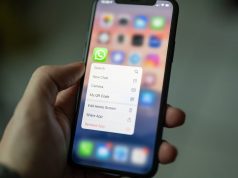Did you know that there exists both pure and impure honey? You cannot attain complete benefits from fake or adulterated honey. It might sometimes be dangerous.
Honey is a sweet, thick liquid made by honey bees. The bees collect nectar from various flowers. This collected nectar is then repeatedly consumed, digested, and regurgitated in the beehive. This process results in honey. The smell, taste, and color of the honey depend on the flowers from which the nectar is taken by the bees. The honey analysis is done to determine the quality and authenticity of honey.
What are the benefits of pure honey?
- Pure honey contains various antioxidants that prevent cell damage and improves the immunity system
- It is also capable of killing various unwanted bacteria and fungus. It is a natural antiseptic that can be applied to wounds and bacterial or fungal infections.
- It helps in tissue regeneration and boosts healing.
- Pure honey has anti-cancer properties. It reduces the risk of cancer.
- It nourishes the good bacteria that is present in the stomach and intestines.
- It helps in treating stomach ulcers and diarrhea.
- Honey treats sore throats. It cures colds and acts as a cough suppressant.
- It lowers blood pressure and triglycerides.
- It is beneficial for heart health.
How is honey adulterated?
Did you know that it takes 24 bees their lifetime to create one tablespoon of honey? There is a high demand for honey because of its exceptional health benefits. Since the demand cannot be met easily, the marketers are adulterating the honey.
Honey is the third most adulterated food item in the world. Honey gets contaminated in various ways.
- To increase the volume of the honey, various products like sugar syrup, glucose, dextrose, corn syrup, etc are added.
- Adulteration of pure honey with synthetic honey (based on plant sugars) has become one of the common ways to contaminate honey.
- Cheaper or artificial sweeteners are added to honey.
- There is also artificial honey, which is made from corn syrup, sugar, food coloring, and another diet for diabetic patients.
- Contaminants from the air, water, and soil are carried into the honey by the honey bees.
- Traces of pesticides, insecticides, and other chemicals can also be found in honey. Chemicals like lead, potassium, etc can be carried into honey by the bees.
- Heavy processing of honey destroys its natural nutrients. There are chances for various chemicals, microbes, and other substances to contaminate honey during processing.
Effects of fake or adulterated honey
- Consuming adulterated honey leads to obesity and increases the glucose level in the blood
- Fake honey can be toxic. It leads to food poisoning.
- Nausea, diarrhea, vomitings, and fever are a few signs of food poisoning.
- Though honey has antibacterial and antifungal properties, it can be grown in some favorable conditions. Various bacteria, yeast, and molds are present in the honey. This presence of microbes can be due to bees, airflow, dust, and even artificial processing.
- Harvesting honey before it’s ripe may lead to higher and unsafe quantities of water in it.
- Fake honey can consist of high levels of sugar leading to diabetes and cholesterol.
- Consuming fake or adulterated honey for a long time may result in heart diseases.
- Adulterated honey is prone to fermentation and spoilage.
How to identify pure honey and fake honey
Fake and pure honey is almost similar in many cases. It is difficult to differentiate between both of them just by their physical appearance. But in some cases, fake honey appears unusual. Some signs of fake honey are
- Unlike pure honey, it is sticky in nature.
- Fake honey is very light and runny.
- It may have no smell or might smell sour.
- When dissolved in water, it gets dissolved immediately.
- It doesn’t caramelize quickly on heating.
These are some simple methods to identify fake honey through its physical properties. In many cases, though the honey is fake or adulterated, it may not show such signs. In these cases, the honey analysis gives accurate results
The honey analysis is done to determine the quality of honey. Various procedures like physicochemical analysis, microscopy, chromatography, spectroscopy, and many more are used to identify the presence of contaminants in honey. The origin and age of the honey can be identified using various processes.
The honey analysis makes it easier to identify fake honey and pure honey. The testing of honey is important to prevent foodborne diseases and ensure food safety. It is recommended to use organic honey to attain better results.
The next time when you buy honey from any store, check for the AGMARK or approval of FSSAI on the bottle. This indicates that the honey is safe to eat. Though honey has many health benefits, it can be attained only if the right quality of honey is consumed.
If you like the article then follow Technoroll for more!





